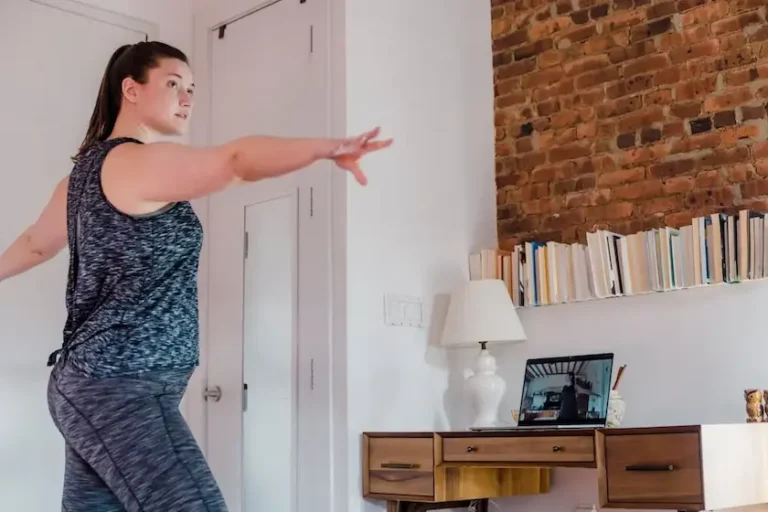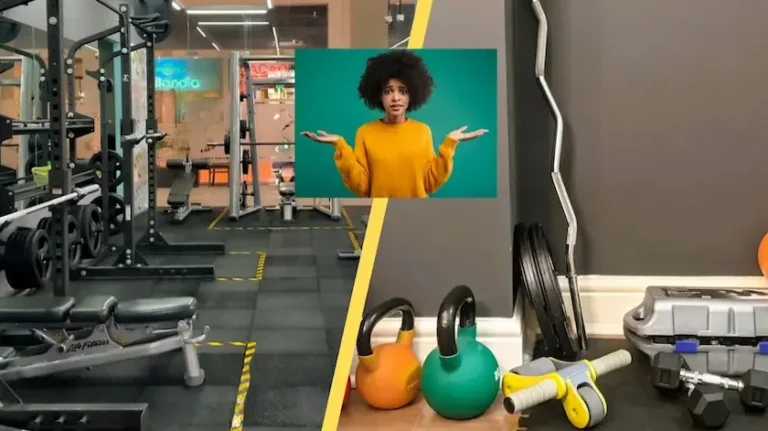The Cons of Home Workouts – Home vs Gym Workouts (Part 3)
These are 10 possible disadvantages of home workouts:
1. Less variety of strength equipment
If you are an exercise machines type of person and you don’t like to challenge yourself with new exercises and different training methods and techniques, home workouts may be a very challenging experience. Same goes for the hardcore gym goers who need all the bells and whistles to enjoy a workout.
2. No cardio equipment (usually) and no live cardio classes
It is not always easy to have cardio equipment at home depending on your budget and where you live. If your house has a 70cm wide staircase you can’t carry a Stairmaster on the upper floors. On the other hand, some people purchase expensive and bulky cardio machines and they use them only for hanging their clothes after work – it could end up being a bad investment.
If you enjoy cardio classes you will have to learn to do without them or find online cardio classes. Fortunately, there is a lot of material on social platforms, and you will never get bored trying different workouts of any kind.

3. Not the best for ‘niche’ gym goers
For the ‘niche’ gym goers who do CrossFit or Powerlifting, home workouts will not be very satisfying. Except if they have the luxury of a custom built basement gym, garage gym, etc. Same for the Pilates machines enthusiasts who can’t afford to have Pilates machines at home.
4. Losing motivation
If you are not a self-motivated individual, you may find yourself struggling to keep up with your fitness program at home. If this is the case, getting support and encouragement from a fitness coach, family, friends, or your partner is essential to stay focused on your goals.
5. Social isolation
If you are the social, extrovert type, you may feel isolated or get bored. Some people enjoy socialising at the gym or having a gym buddy. At home you will only socialise with your family or housemates.
6. Space limitations
Although you don’t need an exclusive spare room in your house to exercise, you definitely need some space where you can exercise safely and stay injury free.
The bigger you are the larger the space you will need to exercise safely and efficiently. If you are 5 feet /152 cm tall your body has a small blueprint, meaning that you need less space to move around, extend your limbs in any direction, jump or lay down, than a person who is 6.6 feet /2m tall, and 2+ times heavier.
7. Losing focus
When you have a family, small kids, or many housemates it can be difficult to maintain your focus or exercise at all. It is best to exercise in a room where you will not be interrupted during your workout. And at a time of the day, when you can focus and have a productive workout. If your housemates are unsupportive it can be disheartening. There is nothing wrong with having a workout buddy at home, as long as you can stay focused on the task.
8. Injury hazards
It is easy to stumble upon something and injure yourself or others. Keep the equipment you don’t use out of the way between sets. After you finish your workout put the weights away, somewhere impossible to stumble upon them. Even if you are well aware of your surroundings, you housemates don’t expect to stumble upon a kettlebell walking to the kitchen.
If you want to use heavy weights, ask a housemate to hand you the weight or spot you. Safety comes first. When you exercise at home you will often have to improvise to make your workout more challenging. To stay injury free, don’t overdo it.
9. No mirrors
This is not really a problem as it is a matter of habit. If you think a mirror will help you to learn good exercise form, or it makes you feel more inspired, a standard wardrobe size mirror will work. Alternatively you can film yourself and try to correct your form next time, or ask somebody to observe and correct your form. If you work with a fitness coach at home or online you will not have a problem at all.
10. Structural limitations
Your home is still a residential property so use common sense. Forget banging weights on the floors and keep it in general within the residential use specifications of your country. This is not a problem if you have a basement, a garage, a shed or other space that you can convert to a thoroughly equipped home gym.
We’ve listed the advantages and the disadvantages, now let’s see in the next blog, who is a good ‘candidate’ for home workouts.







